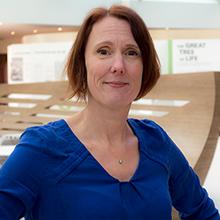
Cornelius Gross
Interim Head of EMBL Rome
EditStudying how the environment impacts human health
The Human Ecosystems Transversal Theme forms part of EMBL’s “Molecules to Ecosystems Programme”.
The theme operates across EMBL sites with the aim of leveraging EMBL’s molecular biology expertise to address some of the biggest challenges relating to human health.
Defining the impact of the environment on human disease risk is an emerging area of research which, when combined with advances in genetics, could inform new treatment interventions, precision medicine and environmental protection.
By working with experts across genomics, epidemiology, toxicology and clinical research, we aim to understand how the combined impact of the environment and genotype leads to the likelihood of disease. From human cohorts to model systems research and developing new computational methods, EMBL aims to pave the way for understanding the molecular basis of genotype and environmental interactions underlying human health.

Interim Head of EMBL Rome
Edit
Team Leader and Senior Scientist
Edit
Associate Group Leader
Edit
Scientific Programme Manager
EditEnable combined environmental exposure and genetic research in human cohorts
Identify molecular biomakers of exposure affects using model systems
Leverage fundamental molecular biology research to inform gene x exposure interactions.
Generate computational tools to enable exposure research in model systems through to human cohorts.
Up-skill the next generation of human health scientists to understand genotype x environmental research.
Develop tools and services to support & enable gene x exposure research.




EMBL researchers and collaborators have shown gut bacteria can alter how some carcinogens are metabolised and distributed elsewhere, that leads to bladder cancer. The study can help better understand how individuals’ gut microbiota affects tumour growth.
This workshop aimed to identify quantitative molecular proxies of environmental exposures through bringing together experts from across epidemiology, toxicology, social science, and computational biology.
A study from the Hackett group at EMBL Rome shows that disrupting the gut microbiome of male mice increases the risk of disease in their future offspring.